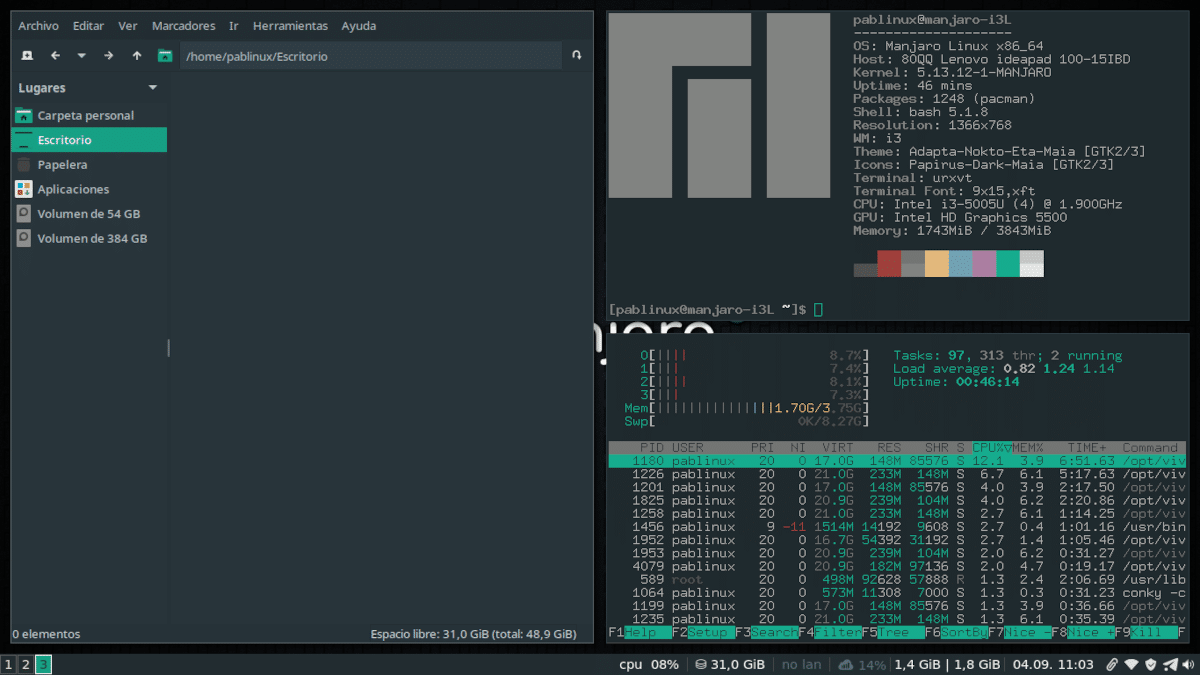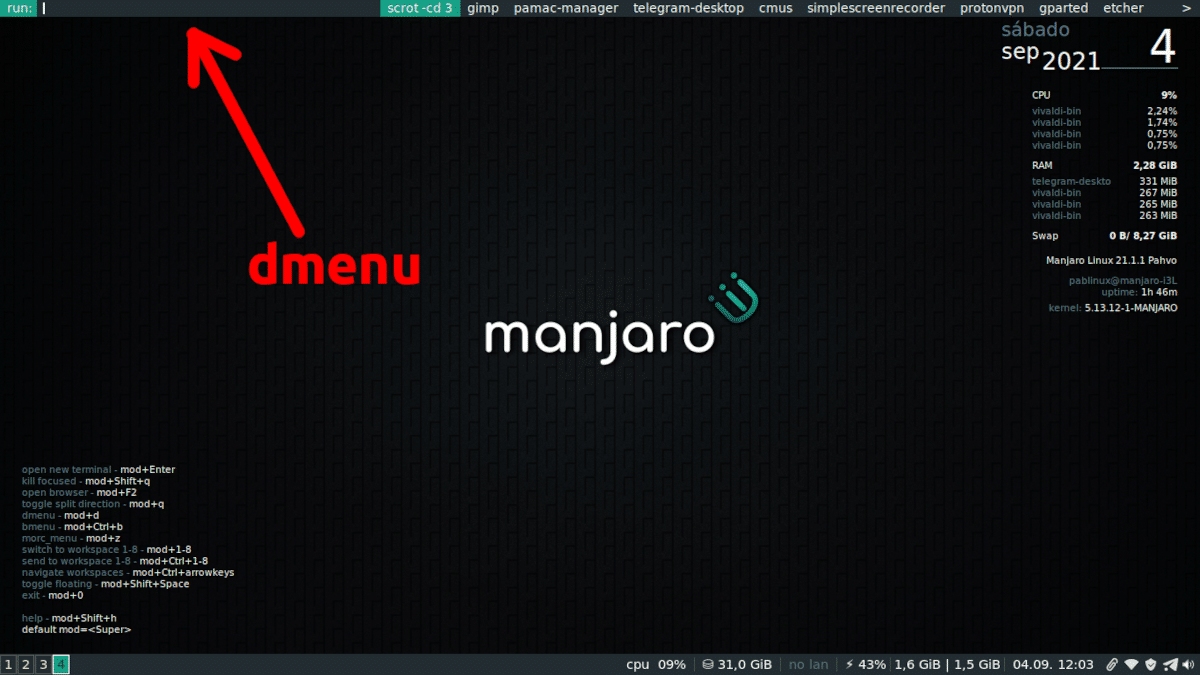
It's been more than two years since I tried KDE again and stayed with it. In the past, it had so many bugs that it was unusable on some machines, so I went back to MATE and, after experiencing some glitches, went back to GNOME. When we have a computer reaches a certain power, we can choose the graphic environment we want, but it is not the same when our computer has ≤ 4GB of RAM and a discrete processor. In that case, the best we can do is use a window manager like i3.
Before continuing with this article I have to say a couple of things. The first thing, which is opinion. And the second, that i3 is not for all audiences. You have to forget about panels or menus to the point of not knowing what is installed if you do not know where to look. i3 is for those looking for something light, quickly and they will know how to fix some things. Once we get used to it, our limited equipment will seem different.
i3 is for those who want something light
What you have in the header capture is how a virtual desktop will look with three open windows, as long as in the last one we have changed how it will open (by default it always does it vertically). Applications open full screen, but when opening more than one the screen will be divided and, by default, leaves a margin around each window that can be enlarged or reduced.
The problem for which you have never used it or asked anyone you know is: where do I start? As well, i3wm (wm of Window manager) usually have a chop on the screen that tells us that "dmenu - mod + d", that "morc_menu - mod + z" and that other things like the browser are mod + (Fn) F2 or the file manager is mod + (Fn) F3. That is where we can start. If not, what we can do is press mod + (Fn) F3, open PCManFM, press Ctrl + H to show hidden files and go to .i3 / config. There we will see the configuration. Also there we can make changes, such as mod + (Fn) F2 to open "vivaldi-stable" and not Pale Moon.
Some shortcuts
Other shortcuts that we will use a lot and that we will see in the configuration file are ("mod" is the Windows key or META, but it can also be Alt):
- mod + number 1-8: switch between virtual desktops.
- mod + 9: locks the screen.
- mod + 0: exit menu.
- mod + Shift + Q: close the window.
- mod + Shift + number 1-8- Send the selected window to that desktop.
- mod + Shift + navigation arrows: change the position of the open windows.
- mod + Enter- Immediately opens a terminal window.
- mod + navigation arrows: switch between windows.
- Ctrl + Shift + C: reload the configuration file, necessary if we edit it and want to see the changes.
- mod + Shift + space bar: change a window to a floating window. So they can be moved or resized as mentioned in the following points.
- mod + R: Enter window resize mode. You have to press Esc to exit it or we won't be able to use the shortcuts again.
- mod + Shift + navigation arrows: move floating window.
- mod + S- Tabs windows and stacks windows vertically.
- mod + W- Tabs windows and stacks windows horizontally.
- mod + E: switch between the different ways of displaying the windows (horizontal or vertical).
Important to know in i3
Where is the app drawer? You could almost say that there isn't. Yes we can access a applications folder in PCManFM. It is not a menu that is opening, but they are ordered by categories and in the end it is the same. Then, if we have it installed we can also enter morc_menu, which is a very simple menu in which the applications are also ordered by categories, but we only see text.

What we may use the most is the dmenu (mod + D). It is like a search engine that appears at the top to "execute" orders, and among them may be launching applications. For example, if we write "gi", everything we can launch with that principle will appear, including GIMP. The first time we launch it, it will tell us if we want to do it with the terminal or in the background (background), for which in normal applications we should choose «background». If we make a mistake, we can edit one of the $ USER / .conf / dmenu-recent files, opening "terminal" or "background" and deleting what we want to change.
Is stable? Does it give problems?
Well, we already said that i3 it is not for all audiences. If I have not used it before as I am using it now, it is because there were things that I did not like, such as the natural scrolling or the sensitivity in the touch panel. Now that I know that it can be put as I want, and that the sound works again (some of us have experienced problems in the past), everything has changed and I usually work with it all the time.
However I'd be lying if I said that I don't keep a joker; I have Manjaro i3 on the same computer as I have Manjaro KDE, I have plenty of space and I can afford it. In my first contact with this window manager I was left with a bad feeling because I did not know or did not want to waste time investigating how to change some things, but now that I have done it, the truth is that I prefer i3 even though I keep a life preserver that, so far, I have not needed.
So is it worth it? My advice is to try it, and the answer is probably 'yes'.